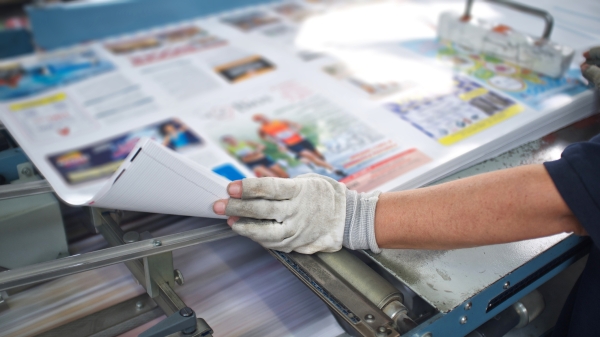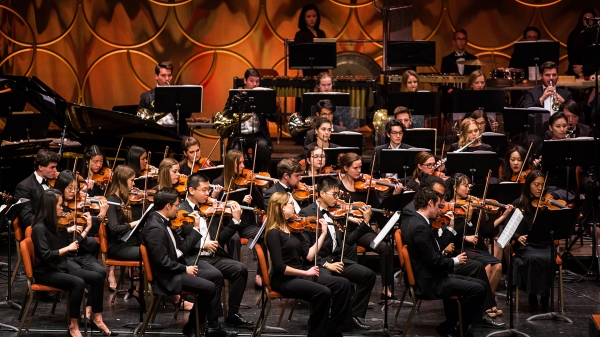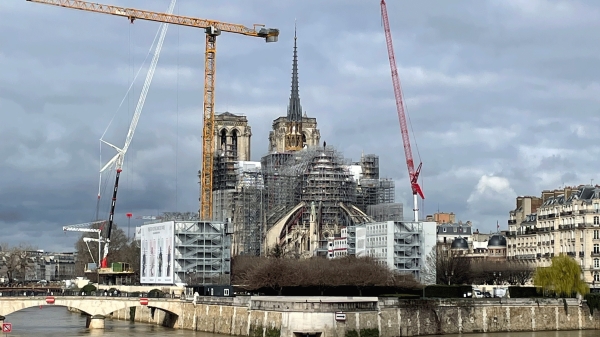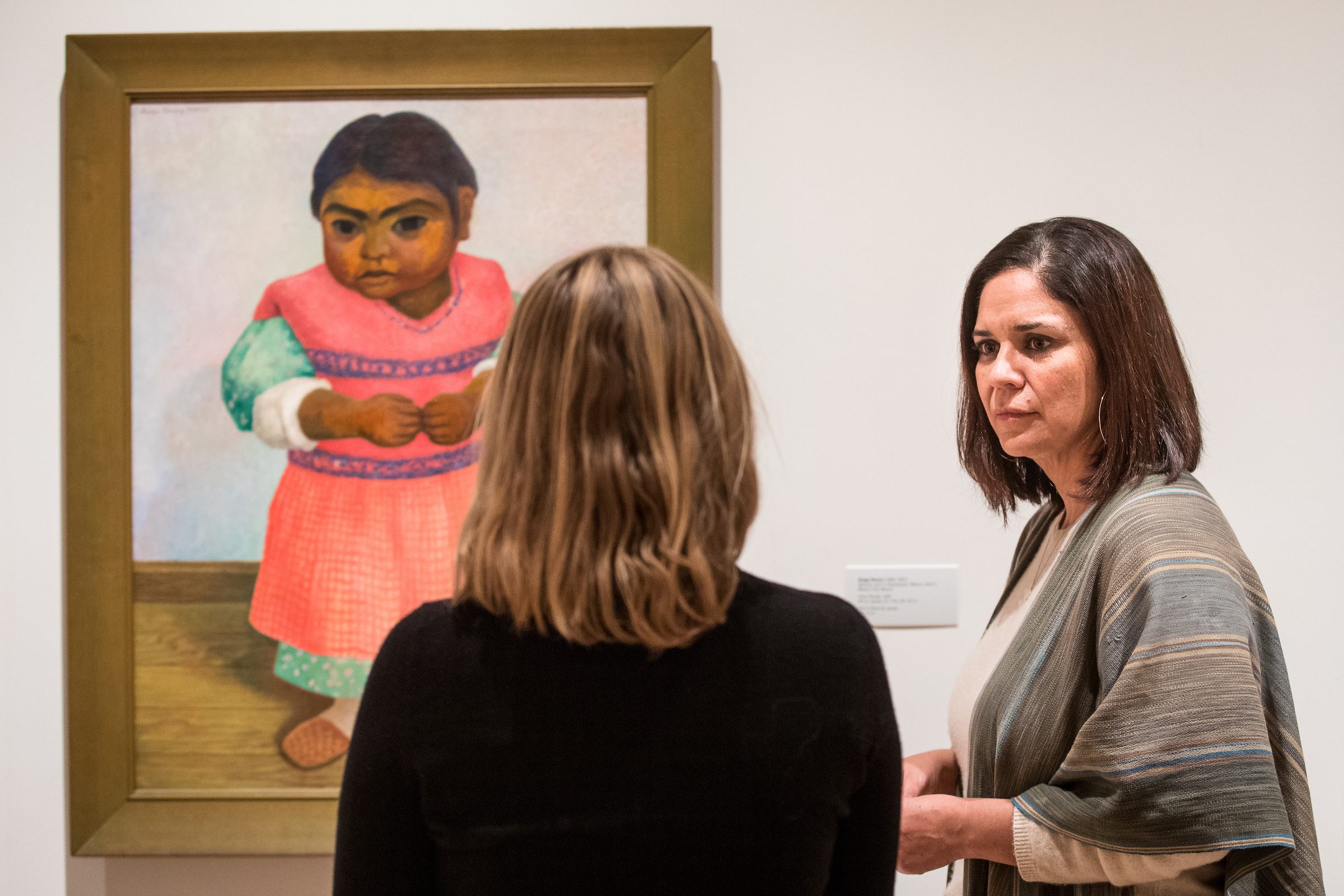New ASU Art Museum director wants to create an inclusive experience
Miki Garcia committed to making the museum a reflection of the university community

Editor's note: This story is being highlighted in ASU Now's year in review. Read more top stories from 2018 here.
Creating art is not a formal, quiet process, and viewing it in a museum should not be either.
Miki Garcia, the new director of the ASU Art Museum, wants to pull back the curtain on the university’s vibrant permanent collection of art and the way its treasures are exhibited. To Garcia, seeing art should be a two-way street.
“My experiences with art have not always been quiet,” she said. “I’d like to open the experience up and transform our public spaces into places where people can work and live and hang out and it’s not a temple of quietude.”
Garcia, who started Dec. 1, came to ASUThe previous director, Gordon Knox, left ASU in 2016 to become president of the San Francisco Art Institute. after serving as executive director and chief curator of the Museum of Contemporary Art Santa Barbara. In her 13 years there, she experimented with different ways of relaxing the formal world of exhibitions — a concept she thinks will work well at ASU.
“Museums have had this tradition of being presenting institutions — all the decisions, everything that happens, happens behind the scenes and when the public arrives at the gallery, they see a very clean, white wall with objects presented in isolation.
“Oftentimes the disposition of the museum is that we are the experts and we assume we will impart our information onto you. I’m interested in challenging that notion. I believe we have expertise, but I also believe you the audience member also have expertise and we can work with each other,” she said.
Among her ideas: setting up maker spaces in which visitors can create art after seeing an exhibit, starting conversations between the audience and the experts and incorporating storytelling.
“It’s about peeking behind the curtain and revealing the process, which is actually what audiences are desiring,” she said.
Video by Ken Fagan/ASU Now
The ASU museum has done groundbreaking work before, she said.
“Marilyn ZeitlinZeitlin served as the ASU Art Museum director from 1992 to 2007. developed a great program, and in her time here the museum did some of the first exhibitions of Cuban art ever in the United States,” she said.
She is impressed by the permanent collectionRivera’s “Niña Parada” (1937) is currently on display, while O’Keeffe’s “Horse's Skull on Blue” (1930) and Hopper’s “House by a Road” (1942) are not., which includes Georgia O’Keeffe’s first skull painting and works by Diego Rivera and Edward Hopper, and she would like the museum’s treasures to be a more visible point of pride on campus.
“I’m interested in licensing. I think about students having a poster of the Georgia O’Keeffe skull hanging in their dorm room that says ASU Art Museum,” said Garcia, who noted that the museum has more than 50 works that represent devils.
“I’m interested in making it accessible to different audiences via programming but also posters, tote bags, all kinds of things so we all feel pride in what this museum has to offer.”
Garcia spent years working for nonprofit museums and has faced the new challenges, such as fierce competition from wealthy private collectors and commercial art galleries.
Museums are also recognizing that they’re largely run by white people for white audiences. A 2015 report from the Mellon Foundation found that 72 percent of museum staff is white, and among the jobs of curators, educators and leadership, it’s 84 percent white. A 2010 survey by the American Association of Museums found that 79 percent of museum visitors are white.
Garcia is passionate about creating a museum that reflects the community — a commitment far deeper than one program or outreach initiative.
“It’s not about getting ‘them’ to come here. It’s about, ‘Do we look like the people we are trying to serve?’” she said.
“I’ve worked in museums long enough to know that one grant to reach out to a particular community isn’t sustainable until it becomes part of the DNA of an institution. That means the people who are donating, people who are decision makers, people who are on the ground, people who are artists — we all have to be embedded into this.”
Miki Garcia (right) in front of Diego Rivera's "Niña Parada" in the ASU Art Museum. "Rivera is responsible for bringing the face of indigenous people to the canon of art and representation in Mexico," she said. Photo by Charlie Leight/ASU Now
ASU’s museum has one huge advantage when it comes to fostering inclusivity: its students. Garcia noted that 70 percent of the “museum ambassador” student workers will be the first in their families to earn a college degree.
“I already have a pool of people for focus groups,” she said.
Garcia comes from a family of artists who loved to visit museums, though she is not an artist herself and never intended to work in the arts.
One semester while she was in college, one of the few classes available was art history 101.
“It was transformational,” she said. She earned her bachelor’s degree in art history and got a job at the Jack Blanton Museum of Art at the University of Texas, where she earned a master’s degree, specializing in Latin American and Chicano art.
“I worked for the curator of contemporary art because I didn’t want to work in isolation. I wanted to contribute the work of Latin American and Latino artists into a broader conversation and invite them into the canon,” she said.
Garcia has a lot of ideas about how to transform the museum experience, and she believes ASU is the perfect fit for invention.
“I found there was not only an appetite for that kind of thinking here but support and encouragement for innovation,” she said.
“The ASU Art Museum has room to experiment and take risks in a way that other museums can’t afford to do.”
Top photo: Miki Garcia, the new director of the ASU Art Museum, said that art is not created in isolation and it shouldn't be exhibited that way. Photo by Charlie Leight/ASU Now
More Arts, humanities and education

Small press dealt big blow
A mighty rumble reverberated throughout the publishing industry late last month with the abrupt closure of a well-known book distributor. Small Press Distribution, who has distributed books for…

ASU Symphony Orchestra welcomes visionary conductor Jonathan Taylor Rush
Guest conductor Jonathan Taylor Rush will join Arizona State University’s Jason Caslor, director of bands, to lead the ASU Symphony Orchestra in their final concert of the season, “Trailblazers,” on…

Chemistry classes are key to art student's success
Amanda Barnette has a passion for art preservation. That means that, for the past four years, the Arizona State University student’s schedule was filled with classes that fit her artistic bent:…
